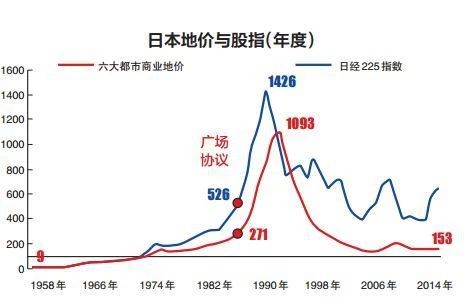近日,中美双边经贸磋商因美方原因受挫,美国继而打压华为等中国公司,开启 “科技冷战”。面对这一局势,不少专家学者深表担忧。耶鲁大学高级研究员、摩根士丹利亚洲区前主席斯蒂芬·罗奇(Stephen S. Roach)就认为,中美冲突已经明确进入了危险地带。斯蒂芬·罗奇(Stephen S.Roach)斯蒂芬·罗奇向中国日报旗下传播型智库中国观察独家撰文《从贸易战到冷战》(“From Trade War to Cold War”),观点犀利,有理有据,一起来看看。
文章认为,尽管中美在6月下旬举行的大阪G20峰会上达成某些协议的可能性仍然很大,但这样的协议大多都是表面上的。
Amid charges and counter-charges, the US-China conflict has now moved squarely into the danger zone.在指控和反指控中,中美冲突已经直接滑入危险地带。And in light of the sharp recent escalation of pressures from the American side — the early May hike in tariffs from 10% to 25% on $200 billion of Chinese exports to the US along with a promise of more to come on the remaining $325 billion of exports, together with a full frontal assault in Huawei — even the odds of cosmetic agreement are slipping by the day.
继对2000亿美元中国输美产品加征的关税从10%上调至25%后,美方又进一步威胁启动对剩下的3250亿美元中国输美产品增加关税,同时对华为展开全面攻击。由于美国对中国的压力急剧上升,即使是达成表面协议的可能性也在一天天地下降。
cosmetic :装门面的;表面的
而华盛顿习惯性打压中国的嗜好已经上升到一个新高度(Washington's penchant for China bashing has been taken to an entirely new level)。共和党和民主党在刁难中国这一点上难得地达成了一致。Republicans and Democrats agree on very little these days. But blaming China for America’s economic ills resonates across the political spectrum.共和党和民主党现今很难达成一致意见。但指责中国是造成美国经济困境的罪魁祸首,却成为美国政界的和鸣。Once the pro-business constituency of free trade, the Trump takeover of the Republican Party has now embraced tariffs with open arms.特朗普曾是自由贸易的支持者,政策亲商,但如今接管了共和党,却对关税张开了双臂。
For pro-working class Democrats, many of whom have long warned of the perils of globalization and trade liberalization, the transformation into tariff warriors has been relatively easy.
对于支持工人阶级的民主党人来说,他们中的许多人早就发出过全球化和贸易自由化的危险警告,转变为关税战士自然相对容易。
After years of abusive trade practices, goes the shared bipartisan rhetoric, it is high time America stood up against China.
在做了多年的违规贸易之后,两党来了一番共同论调:美国是时候站出来反对中国了。美国打压中国,
甚于当年对待日本
斯蒂芬·罗奇认为,今天美国对中国的攻击力度已经远远超出了30年前对日本的打压。
Back then, the US manufacturing sector was experiencing its first taste of pressures on jobs and real wages that could be traced to a sharply widening trade deficit. A mercantilist Japan, fixated on suppressing the value of the yen and accounting for about 42% of the total US merchandise trade deficit in the first half of the 1980s, was the culprit.
当时,美国制造业首次感受到就业和工资的压力,这可以追溯到贸易赤字的急剧扩大。而重商主义的日本是罪魁祸首,他们执着于压低日元汇率,占上世纪80年代初美国商品贸易逆差总额的42%左右。
This led to the so-called Plaza Accord of 1985, when the so-called G-5 coalition of leading industrial nations put Japan in a straight-jacket of currency appreciation that led to asset bubbles and a string of lost decades of economic stagnation and deflation.
这导致了1985年所谓的“广场协议”,当时五大工业国联盟联合干预外汇市场将日本置于货币升值中,从而使日本陷入资产泡沫和持续几十年的经济停滞和通货紧缩。
中国领导层仔细研究过日本的教训,所以拒绝西方类似的建议。
And so Washington has embraced different and tougher tactics to address a Chinese threat that it judges to be far more serious than that which arose from Japan back in the late 1980s.
因此,华盛顿采取了不同和更强硬的策略来应对中国威胁。在他们看来,中国的威胁要比上世纪80年代末日本的威胁严重得多。

图片来源于网络
美国惯于把自己当受害者
从打压日本到打压中国,美国总是将自己视为受害者,把自己造成的经济问题归咎于他人(blame others for economic problems that are very much of its own making)。
然而,美国这种推卸责任的行为与宏观经济学(macroeconomics)最基本的原理背道而驰。
经济学专业的学生都知道简单的国民收入核算恒等式,即投资等于储蓄。

新年伊始,听说有好多同学声称自己去年的读书li...

不知是不是因为今年疫情的缘故,总觉得时间过得...

2020年即将过去,本年度的【好书荐读】系列也迎...
